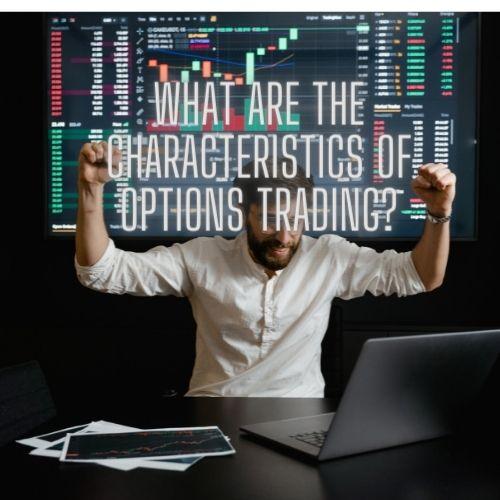Your cart is currently empty!
Month: September 2022
-

Why are paintings so costly?
Why are paintings so costly?
Why are paintings so costly?: When looking for art, you will notice that it is typically expensive. Even inexperienced artists frequently sell their work for exorbitant sums.
Some paintings sell for hundreds of dollars, while others sell for millions of dollars, and you may be wondering what factors influence painting prices.
Here are some factors contributing to the high cost of paintings.
The fact that paintings are originals adds to their high cost.
Artists can quickly translate what they see in their heads into tangible work that others can see.
This requires not only a lot of creativity but also a lot of technical skill.
There can be no other identical copy.
Even the painter would have difficulty re-painting it.
The paint cannot be precisely mixed, sunlight can affect it, and even the drying process can alter its appearance.
It’s not even a matter of using similar brush strokes.
Prints lack the vibrancy of the original.
They are not original works of art but rather reproductions.
Because of this, there is always only one copy.
This also means that one person can only own the original work.
When it becomes widespread, there is a high demand for an artist or specific work of art.
However, supplies are scarce.
There is only one available copy.
They must compete because so many people want the same piece of art.
From then on, the price rises.
Paintings by Da Vinci, Van Gogh, and other classical painters can fetch millions of dollars.
There is only one original version of this painting.
Painters who have passed away
The value of artwork increases when a person dies.
This is because the painter is unable to create new works.
He has only finished a small number of paintings.
His paintings might not sell for such high prices if the artist were still alive.
This is because art collectors and lovers know that more works will be released.
While his paintings made him famous, Da Vinci was also a prolific inventor.
His reputation grew even stronger after his death, even though he was already well-known in his own time.

In his paintings, Leonardo Da Vinci’s personality shines through.
As a result, they are more valuable than if he were still alive and had not completed his life.
Prolonged procedure
The painting process takes time.
Finding inspiration can be challenging at times.
Painting inspiration can strike a painter in seconds, months, or years.
Some people are inspired, while others must seek it out.
Once they have decided on a design for their painting, they must prepare everything.
The canvas, paints, and even some brushes must be prepared before the painter can begin.
While painting, the artist may face creative challenges.
Inspiration may fail him, or something may not function properly.
The paints may let them down.
They could be too dry or not mixed with the correct shade.
Painters can quickly burn out if they spend too much time on one project.
A single painting can take an artist anywhere from a single day to several months to complete.
It is determined by the artist’s complexity, size, and creative process.
This is because the painter must cover the times when he did nothing but paint.
You’re paying for both his time and the finished product here.
Representatives of the arts
He will negotiate the price if he works with an art representative or a dealer.
For example, an art dealer must publicise the artist’s works.
As a result, his works receive a great deal of attention and interest.
As a result, the price increases.
This is about gallery exhibitions.
A gallery wants to attract as many visitors as possible to make money.
They are looking for artists with something new to say or who can establish a current art trend.
Everyone receives a portion of the final price because everyone is involved.
Of course, they want to get the best price possible because it means more money for them.
The greater an artist’s attention from art representatives, the greater the demand for their work.
Fine art is extremely expensive due to its high demand and limited supply.
Size
More miniature paintings may be more complicated, but they require less paint and time to complete.
The artist needs fewer materials and can usually complete the work in a few days or weeks.
Large paintings, on the other hand, can be pretty expensive.
This is because the size is truly infinite.
Large-scale paintings by some artists can cost thousands of dollars.
Others have large canvases made especially for them.
If they use an expensive paint set, the price can skyrocket.
Another factor to consider is time.
Completing a large piece of artwork is a time-consuming process.
A large painting can take months, from applying several layers to finishing the outlines.
The artist must make up for a lost time.
Larger paintings increase the cost of art.
Unconventional artwork
Some people associate art with still lifes and paintings of the Mona Lisa.
They think about impressionism and cubism.
They might be unaware that these artistic styles were novel at the time they were developed.
The most famous artist, Vincent van Gogh died impoverished because no one wanted his paintings.
They thought the style of impressionism was unusual.
His works are now valued in the tens of thousands, if not millions, of dollars.
Unconventional art is expensive because it adds something new to the art world.
It gives art enthusiasts a new perspective on the world or something to ponder while viewing the work.
Not all bizarre artworks will be a smashing success.
Those who do succeed, however, usually pay a high price.
Anyone can copy a style or paint a similar still life or scene.
Not everyone can pioneer an entirely new painting medium or style.
Medium
Although there are three powerful mediums, some artists also use other mediums.
The most expensive medium is a canvas.
This is a traditional painting medium.
Because the artist has complete control over their brush strokes, canvas works well.
It also helps them apply the paint rather than soak it up.
The second most expensive medium is paper.
Paper is less expensive than canvas because it is thinner and requires fewer manufacturing materials.
Painting on paper is more difficult because it absorbs some of the paint.
As a result, the paint is more likely to drip and smear.
Print is the most cost-effective medium.
Printed art is not well received.
On paper or as a print, the same painting would be less expensive.
Collaboration with an established gallery
After working his way up from small galleries, an artist can gain the attention of a large and well-known gallery.
David Zwirner and Hauser & Wirth are two of the most well-known galleries.
Your artwork is extremely valuable.
It’s not easy to get into well-known art galleries.
Some artists devote their entire lives to gaining acceptance into a gallery.
The galleries go through each painting until they find one that they like.
Because galleries typically split the proceeds of artwork sales 50/50 with the artist, both parties are eager to sell the artwork for the highest possible price.
The fact that they are exhibiting in a premier art gallery, where many art collectors with deep pockets are looking for art, helps them command high prices.
Because of its good reputation, belonging to a well-known gallery can raise the price of the artwork.
Art collectors
You may think a work of art is silly or poorly executed.
People pay thousands of dollars for it, which may surprise you.
People buy art because art collectors adore it, even if imperfect.
The art market typically follows a consensus model.
Art collectors advise art enthusiasts on which artworks are significant and should be purchased.
They then consult with other art enthusiasts, and if an agreement is reached, the demand for the artwork increases.
The price will rise as demand rises.
Everyone expects well-heeled art collectors to make the first move.
Art critics can sometimes reach an agreement.
When they begin bidding on who will buy the painting, the rest of the art world realises its rarity.
They want it because it sparks so much debate and interest.
When an art collector praises a work or tries to outbid another collector, the price quickly rises.
Even if the artwork does not appeal to everyone, this is true.
Status symbol
Art is more than just decorative items for the home.
It should start a conversation.
It is designed to elicit questions and provide answers.
Many people, however, regard art as merely a status symbol.
Because it is expensive and can be purchased, you can use it to tell others that you are wealthy without showing them your bank statements.
Collectors and art enthusiasts are typically wealthy.
They have access to tens of thousands of dollars and can make such purchases without hesitation.
They may like the work, but many people purchase art to display on their walls to show off their wealth and status.
For example, someone who owns a Van Gogh most likely paid a high price.
They can discuss it and boast about how much it costs them.
Nobody needs art to live.
It is, however, a luxury item.
That is why paintings are so costly.
How to Save Money on Paintings
If you want to own a few authentic and original art pieces, you may be hesitant to spend several thousand dollars on them.
Here are some suggestions for displaying beautiful artwork in your home without breaking the bank.
Look for emerging artists.
Established artists are paid far more than emerging artists.
Artists in their early stages continue seeking a gallery to exhibit their work.
They may already be in a small gallery, but
They have, however, yet to make it in the art world.
As a result, they cannot charge too much for their artwork at this time.
Amazing artists can be found in small galleries close to you.
They can also be found at art shows and online marketplaces.
Supporting emerging artists allows you to acquire their earlier works, which may become valuable in the future, at a reasonable price.
Buy in small quantities.
More miniature paintings are a more cost-effective way to save money.
Filling a wall with miniature paintings will save you more money than buying a large painting.
Because they require less time and materials, miniature paintings are less expensive.
Miniature paintings can be used to decorate a room in the same way that larger paintings can.
A more miniature painting will not require you to dig as far into your wallet as a larger painting.
Purchase multiple paintings
Depending on the artist, some prefer to sell their work in packages.
If you buy two or three paintings instead of one, the artist may be more willing to give you a discount on one of them.
Some even include a free miniature painting.
Buying multiple paintings is advantageous in several ways.
It makes space in the warehouse available for the creation of new artwork.
It also means that much of their time spent creating the paintings has been compensated.
Furthermore, they no longer worry about finding new customers or hawking their wares.
You can often get a good deal if you buy a few more paintings from the same artist.
Think about printing or going digital.
Look into printed or digital paintings if you want to buy cheap paintings.
These are works by artists who use software rather than traditional painting to create works.
Photoshop and other painting programmes are popular.
You can purchase some stunning printed or digital artwork.
These paintings can also be hung as if they were created with paint.
Conclusion
Each artist only allows you to buy one copy.
Duplicates exist, but they are not identical.
Art galleries and professionals can influence the price of artwork by exciting it.
Fortunately, there are some ways to get paintings for less money.
Use the tips provided above to locate low-cost paintings that look great.
The post Why are paintings so costly? appeared first on https://gqcentral.co.uk
-

Save Money and Get in Shape with Home Gym Equipment
Advantages Of Home Gym Equipment
If you’re not in the mood to join a gym, consider investing in your own home gym equipment. You’ll save money on membership fees and can target every muscle in your body at once. Besides, a home gym is smaller and safer than a crowded commercial gym and you can build up your home gym equipment over time.
Multi-station Home Gyms Target Every Muscle in your Body in one Sitting
Multi-station home gyms can be used for cardio exercise and for building muscle. You can choose from moderate to high resistance levels and work different muscle groups in different exercises. They are also great for burning fat and calories. The low-resistance, high-rep workouts will get your heart rate up and your body is burning calories while destroying fat.
The chest is one of the biggest muscles in the body, and it is used often. For example, carrying heavy bags, pushing doors, and carrying a child all require strength in the chest. Therefore, targeting the chest in your exercise routine is a great way to burn more calories. Most multi-station home gyms feature a station that focuses on pecs, which isolate these muscles while eliminating the use of the triceps.
Home Gym Compact Size
When shopping for compact home gym equipment, you should consider your goals before deciding on what type to buy. For example, if your goal is to build strength and muscle mass, you may want durable and dependable equipment. Alternatively, if you just want to tone muscles and keep strength, a more basic pulley system may do the trick.
When shopping for home gym equipment, be sure to consider the weight stack and the size of the machine. A smaller, cheaper weight stack will not provide enough resistance for your workouts. Also, a lighter weight stack is less effective for leg exercises.
Less Expensive than a Commercial Gym
Starting a commercial gym is expensive. You’ll have to pay for commercial and legal fees. You’ll need to apply for a business license, register with the local authorities, and choose a trade name. You will also need to hire an accountant, and you’ll probably need a few dedicated staff members. All of these expenses can add up to a large chunk of your operating costs. Hiring a professional accountant can help you keep your costs down.
A commercial gym can be intimidating, especially for beginners. The equipment is unfamiliar and there’s no guidance on how to use it. A commercial gym can also be crowded and overwhelming. It’s best to assess your comfort level before joining.
More Comfortable than a Crowded Gym
If you’re not aware of your surroundings, a gym can be a busy place to work out. To prevent accidents, ensure adequate space between stations and be careful when other people are swinging weights. Also, be careful with machines with plate-loaded arms, which may swing out without warning.
You can also call the gym ahead of time to find out when they’re most crowded. You can also use some smartphone apps to determine when these peak hours are. This will help you avoid crowds that are likely to be contagious. Moreover, make sure that you’re wearing a mask to protect yourself from possible illnesses.
In addition to using a mask, you should also make sure that the gym has adequate ventilation. This will prevent any unwanted bacteria from entering the room and causing infections. If you’re not careful, you’ll get sick easily.
More Motivating than a Commercial Gym
 Commercial gyms can be expensive, crowded, and a huge time sink. Plus, you may have to share a bench with one or more people at any given time. You’re also at risk for sickness or injury if you spend too much time in a commercial gym.
Commercial gyms can be expensive, crowded, and a huge time sink. Plus, you may have to share a bench with one or more people at any given time. You’re also at risk for sickness or injury if you spend too much time in a commercial gym.Using your own equipment will also save you money. You can use different weights, and different types of equipment, and choose which exercises that best suit your goals. You can also add accessories to your home gym. For instance, if you want to lift heavy, a power rack can help. Another type of equipment is a barbell rack. Many barbell racks come with plates so you won’t have to worry about losing them. You can also invest in barbell holders, dumbbell racks, and power racks to keep all your equipment organized.
If you don’t have the time to visit a commercial gym, you can set up your own home gym. The cost of top-of-the-line home gym equipment can add up, but it’s not necessary. Home gyms are affordable and flexible. Besides, you can work out in a friendly atmosphere. A home gym also has more variety of equipment, which is a big plus for those with limited budgets.
The post Save Money and Get in Shape with Home Gym Equipment appeared first on https://gqcentral.co.uk
-

What Characteristics Distinguish A Good Family Dog?
What Characteristics Distinguish A Good Family Dog?
What Characteristics Distinguish a Good Family Dog?: Dr Holly Putnam, a veterinarian and past board member of the Association of Shelter Veterinarians, suggests considering the dog’s size, your family’s lifestyle and the energy level best suited.
These three characteristics can assist you in selecting a suitable family dog, whether purebred or mixed breed:
Temperament: The personality of the dog. Choosing someone with a positive attitude will help. A calm dog, for example, can form strong bonds with your children and be a wonderful friend.
Size: The size of a dog does not indicate whether or not it is suitable for children. Size should be considered alongside temperament and energy level. Some larger dogs are gentler, while others are more active. “For example, if you have a family with small children, a large, hyperactive dog could knock the children over,” explains Dr Putnam.
It is entirely up to you and your family to live at whatever energy level they prefer. Be realistic about the lifestyle you can provide for a dog who needs more exercise than the average. If you do not respond to a dog’s demands, his excess energy may lead to later behavioural issues. “If you’re a runner looking for a companion, a docile Basset Hound may not be the best choice,” Dr Putnam says.
Setting up a Meet and Greet
Before deciding, meet potential new pets to get a sense of their temperament and energy level.
Dr Putnam advises keeping an eye on the dog’s interactions with children, the elderly, and the senile.
Dr Putnam also recommends watching the dog’s body language:
Some dogs develop feelings for what they believe to be theirs. When tiny toddlers pick up anything, including the dog’s toy or food bowl, this can lead to a dangerous situation.
5 Things to Consider Before Getting a Family Dog
Along with getting to know the dog, you should speak with employees at the shelter or rescue to learn more about it and its likes and dislikes. Here are five questions to ask potential family dogs:
Is everyone in the house at ease around the dog? Some dogs get along with everyone in the family, while others prefer adults or only one gender.
What is the dog’s energy level? You may want a dog to accompany you and your family on long walks or one you can carry in your arms most of the time.
What kind of ongoing care will the dog need? Is it a long-haired dog that needs to be groomed regularly or an elderly dog that may need more frequent vet visits?
Which age group do you prefer? Do you want a puppy who will need a lot of training but will get along with everyone, or do you want an older dog who is toilet trained but maybe a little reserved and will need some time to adjust to your home routine?
Here is a list of the best family dogs.
While these dogs have characteristics that make them excellent family dogs, you will still need to regularly work on their training and socialisation to ensure they become good canine citizens.
1. Mixed breeds are my top choice!
Don’t dismiss mixed breeds even if your family is primarily interested in purebred dogs. Mixed breeds frequently combine the best qualities of two (or more!) great breeds into a single dog.
Employees at the shelter or sanctuary can tell you more about the dog’s personality and habits because they care for it all day.
2. Retrieving Golden Retriever
The Golden Retriever is a confident, intelligent, friendly, and loyal dog. The Golden Retriever is an excellent companion for children because it is neither aggressive nor fearful.
Although the breed requires a lot of exercises, it enjoys playing (fetch games are its favourite activity, for example, your Golden might enjoy playing with Frisbees).
Because the Golden Retriever is frequently kind and obedient, your children will immediately fall in love with it.
Brushing their beautiful golden coat twice a week is necessary for proper maintenance.
3. Labrador Retriever
Labrador Retrievers are popular for a reason: they are playful, patient, loving, protective, and dependable. Another benefit is that Labradors are intelligent and can be well-trained.
They necessitate a lot of activity (and they enjoy swimming! ), so make sure your family is up for the challenge. Make sure your children have enough room to run and play.
Black Labs, Chocolate Labs, and Yellow Labs are popular breeds because they excel at endurance, strength, and obedience.
These gentle canines get along with most other animals and people. They must be combed once weekly due to their short coats to stay clean and healthy. However, Labradors shed frequently, so be prepared to remove their hair regularly.
4. poodles
This elegant and dignified dog breed is gentle, loyal, and rarely irritable or dull.
Poodles come in miniature and regular sizes, allowing you to choose the size that best fits your lifestyle. They are ideal for children with allergies because they shed so little hair.
Each breed has distinct preferences. For example, the Standard Poodle is obedient, intelligent, lively, and adventurous. Despite their shyness around strangers, they get along well with their friends and children.
On the other hand, Miniature Poodles are loyal to one person while getting along well with other dogs and children. They are astute, responsive, obedient, and entertaining.
Poodle coats, regardless of breed, must be groomed regularly.
5 Irish Setter
The Irish Setter is a cheerful and energetic dog with a red coat who enjoys being around people and playing with children.
This breed is so attached to its family that it avoids being alone and performs best when surrounded by loved ones. (Here are some easy ways to prevent separation anxiety in your dog.)
The Irish Setter is an intelligent and trainable companion who enjoys greeting visitors and is ideal for people with a yard.
Because Irish Setters have longer coats, they must be brushed and combed regularly to prevent hair mats.
6 Vizsla
While this dog breed is not suitable for everyone due to its need for regular activity. It’s one of the best dog breeds for active families with teenagers or adults.
The breed is also devoted, confident, and bright. Vizslas form strong bonds with family members and learn new tricks quickly.
Labrador and Newfoundland
The Newfoundland, also known as “nature’s babysitter,” is one of the most intelligent dog breeds in the world, loving and protecting children.
This breed resembles Mother Teresa in gentleness, compassion, and patience. This enormous, adorable dog will quickly win over younger and older family members.
The Newfoundland is ideal for a family with lots of open space, and despite their tendency to drool and shed a lot, they should not be left outside in the garden (no dog should). Their long coat necessitates regular brushing and maintenance.
The Newfoundland is an excellent swimmer who has rescued people in distress. They are easily trained and task-oriented, so don’t hesitate to offer them incentives requiring extra effort.
They require less maintenance due to their short coats.
8 Bull Terrier
Despite its unfortunate reputation as an aggressive animal, the Bull Terrier was created to be a dog that gets along with people of all ages, from the elderly to the young.
Remember that your Bull Terrier is prone to mischief, especially around other small animals and dogs. To avoid complications, keep your pet mentally and physically busy every day.
A Bull Terrier’s short, flat coat requires little maintenance, and the breed is happiest when given access to a yard to play in.
Beagle
The Beagle is an excellent choice for families due to its small size (it can be carried easily!) and peaceful temperament.
Beagles were initially kept as hunting dogs, and their strong frame ensures they are never too tired to play. This breed is ideal for active families with children who enjoy hiking and exploring the outdoors.
The Beagle is an intelligent, friendly, and cheerful dog who gets along well with other pets (aside from a bit of hunting here and there). They must be brushed and bathed regularly because their hair sheds.
Bulldog 10
The Bulldog is a durable, kid-friendly option. It will not, however, be recognised as the “most energetic dog.”
The Bulldog can live in either large or small houses.
Most Bulldogs are also friendly with visitors and get along well with other pets, making them an excellent addition to a busy, social family. Because of their small size, they are suitable for both large homes and small apartments.
If you want to get a bulldog, remember that their clamped jaws necessitate extra caution when brushing their teeth and that they frequently pant, snore, and drool.
Wipe the folds around their tails and facial creases to prevent dirt buildup. Their fur, on the other hand, requires almost no maintenance.
Understanding what makes a dog kid-friendly will make choosing a new dog for your family much more accessible.
The post What Characteristics Distinguish A Good Family Dog? appeared first on https://gqcentral.co.uk
-

Acupuncture Treatment for Weight Loss That Works
People are always seeking for the newest and most effective ways to reduce weight in a world where physical fitness is prioritized. Acupuncture, which involves inserting tiny, filiform needles into precise points on a person’s body, has been shown to be an effective weight-loss therapy.
Many individuals may be put off by the notion of being implanted with needles in their quest for weight reduction. This traditional Chinese alternative medicine, on the other hand, seeks to establish a control mechanism that will enable the patient to effectively regulate hunger desires in the long term.
The Truth About Acupuncture Weight Loss
Emotions have been shown to be closely related to weight gain. Apart from physical hunger, people go for a huge chocolate bar or a large dish of burgers and fries for the comfort that food and eating bring. Excessive weight gain is often a psychological problem rather than a medical one. You may not know it, but you tend to eat more when you are anxious, annoyed, or under pressure.
Acupuncture uses hair-like needles to target certain parts of the body. These points correspond to certain areas of the body, and by stimulating them, the patient will get a stronger feeling of inner balance. As the needles are inserted into certain areas of the body, various hormones are released. These medicines help you manage your appetite and efficiently reduce your desire to overeat.

How Does Acupuncture Help You Lose Weight?
Most acupuncturists will target the regions behind the ear to promote weight reduction. When these areas behind the ear are activated, endorphins are produced in large numbers. Endorphins are known as “feel-good hormones,” and they may be utilized to relieve pain and fever naturally. Endorphins are produced after increased physical activity, such as good exercise, and are responsible for making you feel better.
These biological chemicals assist the patient to relax more deeply, lowering stress dramatically. When a patient has achieved mental well-being, the likelihood of enhanced weight reduction improves. Endorphins are also produced when the body feels modest physiological discomfort, lending to its reputation as a natural pain reliever.
Acupuncture patients often report little or no pain, despite the fact that the bulk of the points is located near nerve endings and muscle tissues. Signals are sent to the brain when the needles are placed into the body, triggering the pituitary gland to produce endorphins.
Other body parts might also be employed as entrance sites for better weight control. One of these locations encourages people to eat less, while another may reduce water retention in the body. The acupuncturist may use a multi-targeted technique according to the patient’s requirements.
Consultation with a Licensed Acupuncturist
Nowadays, there are several acupuncture practitioners that provide a wide range of therapies. If you want to use acupuncture for weight reduction, make sure you go to a qualified and experienced acupuncturist. A badly trained acupuncturist may be unable to detect specific meridian points, inflicting undue agony and misery on the body.
In addition, your acupuncturist may advise you to take a herbal supplement as part of your treatment for a longer-term benefit. Your treatments may not have to be continued indefinitely; however, you may need maintenance sessions to be healthy.
There are alternative ways to effectively lose weight that do not include crash diets or strenuous exercise. When conducted by qualified professionals, acupuncture may be the solution to successful weight control. While it is not a miracle cure, it might be the best weight reduction solution for you.
Acupuncture is a type of holistic medicine.
The capacity to treat an illness via alternative ways is known as holistic healthcare. This implies that the patient receives no medicine, and a device such as a swarm of needles may suffice.
Acupuncture has been used for over 2000 years. This comprehensive therapeutic technique has just recently arrived in the United States. According to studies, it may repair minor ailments while also preventing others from arising.
Acupuncture needles are very tiny, although they are thicker than a human hair. This shrinks it to the size of hypodermic needles.
Most acupuncture patients do not show significant improvement after only one session, which is why numerous treatments are recommended.
Acupuncture has been the topic of several study publications, all of which have shown excellent results. For example, 400 migraine patients in the United Kingdom reported feeling better after three months of sessions.
Acupuncture has also been shown to be useful in helping people cope with arthritis in the United States because the needles help the body battle this chronic condition, which is far less expensive and more effective than orthodox treatment.
Acupuncture may help with more than just arthritis and migraines. Clinical research has shown that it may help obese persons lose weight as well as relieve insomnia.
Because certain patients cannot tolerate traditional anesthetics, several nations have employed acupuncture to substitute chemical anesthetics prior to surgery.
Acupuncture may also assist individuals to overcome addictions including alcohol, drugs, and smoking. According to one study of smokers, the typical patient would cut their cigarette usage in half after just one treatment. Consider what would be possible after a few more sessions!
As a result, clinics have sprouted up all over the country that only practice acupuncture as a form of rehabilitation.
In the United States, acupuncturists charge $75 to $150 for each session. This is usually reduced with successive treatments. Depending on the patient’s condition, the person will most likely need 10 to 15 treatments two to three times each week.
Make sure it’s covered by your insurance before going to one. If it isn’t, you should request that it be included since it is much less costly than surgery.
Acupuncture has risks, but they may be avoided if the practitioner is a qualified specialist who guarantees that the needles used are disinfected before being inserted into the body.
Many professionals in the medical field now recognize that alternative therapy, such as this, may also benefit the patient, which is why they may recommend someone if required.
So, if you’re tired of orthodox medicine’s negative effects and want to adopt a more holistic approach to healthcare, why not try what acupuncture can do for you? It is both painless and cheap. In reality, it is only one of many alternatives for managing a chronic illness.
This article is brought to you by Frome Acupuncture Clinic
The post Acupuncture Treatment for Weight Loss That Works appeared first on https://buydroppeddomains.com
The post Acupuncture Treatment for Weight Loss That Works appeared first on https://gqcentral.co.uk
-

What Are Liquid and Illiquid Assets?
Investing in illiquid assets can be an excellent way to diversify away from systemic risk and build a hedge against market volatility. They should, however, be considered only after you have completed your other investments. Illiquid assets can protect your capital while also providing you with regular income.

Investing in illiquid assets
While investing in illiquid assets carries significant risks, they are frequently an excellent way to diversify your portfolio. They may also involve a more extended lockup. Due to legal restrictions and minimum investment amounts in the past, investors had limited access to these investments. On the other hand, the development of online investment platforms has made it much easier for investors to invest in illiquid assets.
Investing in illiquid assets can assist investors in limiting portfolio losses during downturns. However, longer lock-up periods can prevent investors from selling or redeeming their investments. These lock-up periods can range between five and ten years. Furthermore, illiquid assets are not a good choice for investors with short time horizons.
Investments in illiquid assets are riskier than those in liquid assets. This means that investors should brace themselves for increased volatility. While the potential returns are higher, the risks associated with investing in illiquid assets must be carefully considered. If you are a risk-averse investor, you should focus on liquid assets. Investing in illiquid assets can significantly boost your returns if you are a risk-averse investor.
The risk of default is one of the risks of investing in illiquid assets. These investments can be costly and necessitate substantial amounts of debt and equity. Furthermore, you may be unable to sell them until the project is completed. Furthermore, lenders may impose covenants requiring investors to manage them properly.
For the average investor, investing in illiquid assets is not always a good idea. They are usually one-of-a-kind and less liquid than other assets. You might be unable to sell them without a significant discount, so you might lose money. Furthermore, because illiquid assets are more volatile, they pose a greater risk to the investor.
Understanding illiquid assets is critical for constructing a diverse investment portfolio. In some cases, investors may be willing to pay a premium for the risk associated with illiquid assets. This type of investment, however, may be best suited for high-risk investors. If you can tolerate the risk of fluctuating prices and don’t mind long-term investments, you should get a decent return.
Unlike publicly traded securities, illiquid investments do not have a public market. Private equity firms determine the value of these assets in this case. These companies also set the sale date and distribute the capital. However, before investing, investors should ensure that the investment is illiquid.
On the other hand, some illiquid investments are still worth considering for long-term investment. One example of such an investment is real estate. Real estate, for example, tends to appreciate over time, making it an excellent way to mitigate the effects of inflation. Furthermore, illiquid real estate can yield higher returns than liquid investments.
The government recently proposed that DC occupational pension schemes disclose their illiquid asset investment policy in their Statement of Investment Principles (SIPs). This regulation is intended to protect investors while increasing investment decisions’ transparency. It is scheduled to go into effect on September 30, 2020. Non-UCITS retail schemes will also be required to disclose their investment policies more clearly.
Mutual funds are another example of an illiquid asset. Most mutual funds have rules that limit their ability to sell shares immediately. This can end up costing you a lot of money. On the other hand, exchange funds allow investors to trade shares freely. It is, however, possible to invest in both types.
While investing in illiquid assets has its benefits, it also has many drawbacks. Illiquid assets are subject to the bid-ask spread, which is the difference between the bid and asking price. This difference represents the costs of purchasing and selling the asset. The greater the bid-ask spread, the more challenging trading in these illiquid assets becomes.
Purchasing liquid assets
Investing in liquid assets is an effective way to hedge against market losses and provide security to your portfolio. Furthermore, these investments can be used to cover unexpected expenses or to capitalise on potential opportunities. On the other hand, knowing when and how to sell liquid assets is critical.
David Sokolin, a third-generation wine merchant and CEO of the world’s largest rare wine company, explains the economic principles of fine wine and how to invest in this type of investment in Investing in Liquid Assets. His book also explains how to use resources to find the best deals and maximise returns.
Most new investors begin by investing in liquid assets through brokerage firms. However, these investments can be risky, especially if unfamiliar with them. Furthermore, hard assets necessitate a larger initial investment, which may be too risky for a novice. If you’re looking for a long-term investment, hard assets may be a better option.
Liquid assets are difficult to sell. They can be challenging to convert into cash. For example, because real estate takes a long time to sell, there is a risk that the value will not rise as quickly as the investor expects. However, you should not be discouraged from investing in real estate.
Investors place a premium on liquid assets. They can be sold for their total value anytime, making them an excellent investment. Liquid assets benefit your portfolio, particularly if you have short-term needs. They can also assist you in meeting short-term obligations.
Secondary markets are frequently used to trade liquid assets. As a result, OEFs investing in these assets would be unaffected by QE. The authors present a clear conceptual framework for asset allocation that considers the advantages and disadvantages of both types of investments. The authors also consider the liquidity risks associated with these asset classes.
The post What Are Liquid and Illiquid Assets? appeared first on https://libraryola.com
The post What Are Liquid and Illiquid Assets? appeared first on https://gqcentral.co.uk
-

Why Are Ink and Toner Cartridges so Expensive?
Why Are Ink and Toner Cartridges so Expensive?
Why Are Ink And Toner Cartridges So Expensive: If you own a printer, you know the harsh reality: printer ink is expensive (and so is toner).
But why is this the case?
Why are replacement cartridges more expensive than the printer itself?
The answers to these and other problems are right in front of you.
Why are ink cartridges so expensive?
Here’s a simple solution: ink cartridges are expensive, so businesses can profit.
The overwhelming majority of printers are sold at a loss. Rather than selling inkjet or laser printers, a manufacturer makes money by selling printing supplies.
Both the technology and the prices are completely under the manufacturer’s control.
What is the actual cost of printer ink?
In 2013, Consumer Reports discovered that ink in ink cartridges costs between $13 and $75 per ounce!
* That is more expensive than the world’s most expensive perfumes!
How much does a gallon of printer ink cost?
Let’s do some basic math.
A gallon of liquid in the United States holds 128 ounces:
128*[$13, $75] = [$1664, $9600]
A gallon of printer ink ranges from $1,664 to $9,600.
And $20 billion is consumed globally each year!
Not one billion, but twenty billion dollars!
Is printer ink prohibitively expensive?
Maybe.
When finding a solution, speed and simplicity are rarely sufficient. Ink cartridges are not less expensive for a variety of reasons.
Here are the seven most important factors contributing to ink’s exorbitant price.
1. Your printer is ready. Replacement ink is prohibitively expensive.
This is the fundamental business model that all printer manufacturers follow.
HP, Brother, Epson, Canon, and the other major printer manufacturers make very little money at retail. Some people even lose money.
However, printer ink is expensive!
Companies recognise that they will recoup their investment through replacements over the printer’s life.
Printers are frequently sold at or below cost, enticing customers with low prices. These businesses understand that most customers prefer original OEM printers to less reliable remanufactured and compatible third-party products.
This business model is also known as the “razor blade.”
A razor is cheap because the manufacturer makes money by selling replacement blades to consumers. Razor blades will always be in high demand as hair grows.
2. ink research and development
The high price of inkjet and laser printers is frequently attributed to R&D.
HP claims to spend $1 billion annually on research and development and to have over 4,000 patents on consumables such as laser printer toner and ink cartridges.
Cartridge production necessitates sophisticated machinery. Each type and brand of ink has its formula.
OEM cartridges are specifically designed to work with printers and copiers. This has a substantial impact on the price of replacement cartridges.
3. Ink is difficult
People have been using ink to draw since the 4th century BC, and it has been used to power computer printers since its invention. The production of ink is a complex process. The printing process is identical.
Some printer manufacturers, including Canon, Hewlett-Packard, and Lexmark, use thermal printing.
A thin filament runs through the printer cartridge chambers. When the filament is heated, a droplet of ink from the cartridge is forced through the print head and onto the paper, causing the ink to bubble.
An electric charge in Epson and Brother printers changes the shape of the piezoelectric material inside the cartridge. This sends a print pulse through the print head and onto the paper.
(Do you have issues with your inkjet printer? Learn how to unclog a print head!)
To avoid malfunctions, the most critical components – the ink cartridges – must be well thought out regardless of the device or process used.
Why is printer ink so expensive?
The human thought process is involved in technological design!
4. The best is more expensive.
Genuine OEM ink remains the best and safest option for printer owners, but quality comes with a price.
How much does printer ink cost?
Replacement cartridges for high-end inkjet printers may cost as much as the printer itself.
Yes, it is that expensive.
You can use compatible or remanufactured cartridges in place of OEM brand consumables, but there’s no guarantee that your printer will work properly.
While using compatible or remanufactured cartridges can save you money, remember that they typically have lower page yields and produce lower-quality prints.It’s the same as filling your sports car with crappy gas, which causes it to sputter, backfire, and stall until the harmful gas is flushed out.
5. Supply and demand
Almost every office, including yours, has at least one, if not several, printers. As the use of home offices and homeschooling grows, many employees’ printing needs are being met by home printers.
Ink demand is consistently high and only slightly fluctuates. As a result, the cost of OEM ink will continue to rise.
Printer owners must shop for the best deals on genuine replacement ink, which is rarely available from big-box stores.
You’ll need to look for the best deal on replacement cartridges online. (Don’t worry, you won’t have to look very far!)
6. Specific knowledge
Ink cartridges are not interchangeable. Printer ink design is highly specialised, which raises R&D and manufacturing costs.
You must conduct extensive research when purchasing replacement ink cartridges for your printer.
To begin, you must identify the brand and model of your printer to purchase the correct replacement.
Furthermore, almost all cartridges are available in an XL version with a large capacity. These high-capacity cartridges can help you save money per page if you print frequently.
The majority of inkjet printers use four different ink cartridge colours: blue (C), red (M), yellow (Y), and black (K).
Printers that use three-colour all-in-one cartridges should be avoided. They waste ink when only one colour is used.
7. Printer cartridges are engineered to fail.
Printers are as well. Televisions, too. In addition to smartphones.
Today’s electrical devices are all built to last a certain amount of time.
Yes, printer manufacturers can manufacture electronics that will last for decades, but where is the profit?
We live in an electronic age where everything is disposable.
Unfortunately, potentially hazardous substances are frequently found in these electronics.
Make sure that your electronic waste is recycled correctly!
Increase the life of your ink and toner cartridges.
The print heads can dry out if you do not use your printer for an extended period. Once a week, use your printer, and once a month, perform routine maintenance (printhead alignment, nozzle test, etc.).
Store your ink and toner cartridges in a secure location. Store your supplies in a cool, dry place until you’re ready to use them.
Some fonts necessitate a more significant amount of ink than others. Arial may appear simple and clean at first glance, but it is a thirst quencher. Use Times New Roman, Courier, or Garamond to save paper.
The goal is to buy less and use more!
Consider switching to draught or grayscale mode to save black ink. For final draughts, only use the highest quality level.
Check your ink levels regularly! This has the potential to save your life! You don’t want to run out of ink while working on a big project! Make a plan ahead of time!
Alternatives to expensive ink and toner
Consider non-OEM printer ink and toner.
Although it may be difficult to admit, some high-quality non-original replacement inks and toners are available on the market.
We still believe that original imaging devices are the best imaging replacements. OEM cartridges offer superior image quality and page yield.
If you’re on a tight budget and willing to compromise on quality and page yield, one of the higher-quality aftermarket cartridges may be worth considering.
They may employ less expensive technology, but it will suffice in an emergency. You should do some preliminary research.
Refilling ink cartridges
We despise this idea! Cartridge refilling is a time-consuming and messy process. We’re not using syringes or rags!
Try it if you must, but you’ll discover that refilling ink cartridges is more trouble than it’s worth. Refilled cartridges are a no-go!
Consider your printing needs.
Don’t buy OEM replacement cartridges if you don’t need them. Reduce consumption of black text documents account for most of your print volume to save money.
Make the colour mode grayscale. Use less expensive cartridges the rest of the time and save the expensive OEM cartridges for printing family photos on glossy paper.
It is far better to plan ahead of time for what you may require in the future. The last thing you should do is rush to a retail store to buy replacement cartridges.
You can save money by planning your purchases ahead of time.
Automation of ink refilling programmes
Most printer manufacturers offer automated refill programmes in which you are welcome to participate.
While this may be a convenient and cost-effective solution for some, we’ve heard horror stories about expensive automatic refills and the difficulty in opting out of automatic ink refill programmes.
Why is toner so expensive?
Toner and ink are the same prices for the same reasons:
Supply and demand
Research and development
Specialization
Toner brand pricing strategies, as well as other factors discussed in this article
However, as more advanced technology, toner provides lower printing costs per page than printer ink.
Nonetheless, toner cartridge prices remain relatively high.
The post Why Are Ink and Toner Cartridges so Expensive? appeared first on https://gqcentral.co.uk
-

What Does Commodity Mean in the Market?
Commodities are physical goods traded on the market. They are good hedges against inflation as well as a form of wealth. This article will explain what a commodity is and how it functions in the market. Furthermore, we will understand why it is critical to invest in commodities.

Commodities are physical products.
Commodities are tangible goods that can be purchased and sold. They can be obtained directly from suppliers, such as grains, or via futures contracts. Maritime transportation is the most common mode of commodity transport, but it is not always straightforward. Commodities are typically abundant natural resources in some areas while being scarce in others. When commodities are traded internationally, they become more valuable to the economies of their origin countries.
Commodity prices fluctuate due to changes in demand and supply over time. Demand rises during large harvests and falls during droughts. Similarly, natural disasters such as wildfires can lead to crop shortages and price increases. While gold is a relatively stable commodity, many commodity prices are cyclical, rising and falling with the economic cycle.
Commodities are divided into two categories: soft and hard. Things that are quiet can be grown or processed without machinery. The difficult things, on the other hand, are those that must be mined. Futures and spot markets can be used to trade items.
Commodities play an essential role in our daily lives. Entities, whether coffee, gold, or oil, play an essential role in our lives. Futures and stocks are also actively traded on the financial markets. These markets allow investors to speculate on an item’s future price without delivering it.
They are available for purchase on the market.
Commodities are traded in the market using contracts for future delivery. These contracts are used to hedge against price changes and to profit from price trend speculation. For instance, if a speculator believes that prices will rise in the future, he or she will purchase a futures contract today and sell it later. The price of that commodity will fluctuate, and the speculator will profit or lose money based on whether the trend is correct.
Commodities are traded on two major exchanges. The spot market involves the immediate delivery of a physical product, whereas the derivatives market involves future delivery and typically involves closing a position before delivery. These markets are structured around standardised contracts known as futures and options. Energy products such as oil, natural gas, coal, and ethanol, as well as agricultural products such as corn, sugar, soybeans, and livestock, are traded in these markets.
Commodities are frequently classified as hard or soft, with complex entities necessitating mining or drilling. On the other hand, soft commodities are grown or ranch, which is why the term delicate commodity is used. Commodities are broadly classified into four categories: agricultural commodities, raw materials, energy products, and industrial products.
They act as an inflation hedge.
Commodity investing is one of the most effective ways to protect your investment portfolio from inflation. These assets typically have a positive inflation beta or predict the reaction to one inflation unit. According to Vanguard research, a 1% increase in inflation causes commodity prices to rise by 7% to 9%.
Some commodities are more volatile than others but have a high potential for appreciation. If you don’t have the funds to invest in physical commodities, think about buying an iShares Silver Trust, which tracks the performance of physical silver. Aluminium and copper are two other commodities that have seen significant price increases. Copper, for example, is expected to more than double in value within the next five years. Electrical appliances, cookware, and solar panels all require this metal.
Many investors are turning to commodities as an inflation hedge. However, investing passively in commodity indices may not be the best way to protect against inflation. Actively investing in commodities is a much better option economically and in terms of responsible investing. Despite market volatility, these investments are more stable.
Commodities are an investment vehicle that offers investors a diverse range of returns independent of stock returns. Precious metals, industrial metals, oil and natural gas, livestock, and food-based commodities are examples of commodities. Adding a portion of your portfolio to these asset classes can diversify your portfolio while lowering overall risk and increasing returns during periods of rising inflation.
They represent a type of wealth.
A commodity is a physical good or service sold at a set price. This asset has numerous advantages over other types of wealth. It is a more secure investment because its value does not depreciate over time. Furthermore, many people regard it as a haven. In today’s economy, which has been experiencing unprecedented growth since the 1970s, it is critical to find a way to protect one’s investments.
Agricultural products, raw materials, industrial metals, precious metals, chemicals, and raw materials are examples of commodities. Some of these materials are so similar that they can be traded worldwide. Commodity buyers know precisely what they’re getting and how much they’ll pay because they’re standardised and interchangeable.
Commodities are a type of wealth that is frequently traded on the market. These products are used by the majority of people all over the world. As a result, they are a significant investment. Commodities are also a store of value, so they tend to hold their value for an extended period.
They are associated with politics.
Political decisions and weather heavily influence raw material markets. Wars and tensions in the areas where these commodities are produced can cause sharp price fluctuations. For example, the Middle East holds more than half of the world’s oil reserves. Political decisions can have an impact on the price of oil.
They are a type of investment.
Purchasing commodities is an excellent way to diversify your portfolio. This type of investing, however, is not without risk. Prices for items are influenced by global demand and supply, weather changes, and other factors. Natural disasters, such as hurricanes, can also significantly impact commodity prices. Last year, for example, a severe hurricane storm decimated Carolina’s corn crop, reducing yields by up to 20%. Corn prices skyrocketed as a result.
Investors can buy futures contracts in addition to physical commodities. These contracts provide exposure to a wide range of commodities. Agricultural products, precious metals, livestock, and natural resources are examples. These investments are also an excellent way to reduce the volatility of a well-diversified portfolio.
Commodity investments are best made through companies that manufacture them. This way, you can protect your investment while preparing for future market changes. You should, however, always be aware of current market events and trends. Understanding the market allows you to make sound decisions when investing in commodities.
Commodities are a type of investment based on supply and demand. Many commodities’ prices fluctuate over time because they are raw materials. For example, oil is used to manufacture automobiles and other products. As a result, rising oil prices may impact airline profitability.
The post What Does Commodity Mean in the Market? appeared first on https://kb5b.net
The post What Does Commodity Mean in the Market? appeared first on https://gqcentral.co.uk
-

What does it mean to clean a dryer vent?
You may wonder how much it will cost to clean your dryer vents. There may be additional labour costs. They may offer this service for free if you engage that company for something else. Some services, such as cleaning your dryer vents, may be costly.

Care for dryer vents
A professional dryer vent cleaning can help you avoid damage and extend the life of your dryer. Repairs will be avoided, saving you even more money. Clogged dryer vents can increase your electricity bill by 18% to 25% and shorten the life of your dryer. Get your dryer cleaned by a professional once a year to keep it in good operating order and avoid the chance of a fire.
Dryer vents should be cleaned once a year to ensure optimal airflow. Lint in your vents is dangerous because it can catch fire and lower the air quality in your home. Dryer vents that are not maintained increase the risk of a fire, waste energy, and add to indoor air pollution.
A company that specialises in dryer vent cleaning will better understand how it operates. Every section of the duct will be examined, not only the one with the clog. If there are any problems, the expert can diagnose them and recommend solutions. If your dryer has a lot of lint, professional services may be more expensive than those of a less-qualified expert.
When you rent a house, you must also have the vents cleaned by a professional. This will prevent the device from overheating and causing serious electrical difficulties. Mould growth inside a clogged vent is also possible, in addition to requiring a little repair bill. Additionally, excess lint may drive the outer vent cover open, allowing pests to enter.
If your clothes aren’t drying properly, it’s possible that your dryer vent needs to be cleaned. If your ducts are clogged, your clothes may be destroyed, and your electricity bill will climb. Furthermore, if your vent is clogged, your lint filter may quickly fill up, and your freshly-dried clothes may have a musty odour.
Cleaning the dryer vent is a challenging procedure. Cleaning the ducts thoroughly necessitates the use of specialised equipment. These holes are predicted to be long and winding. Have a professional clean your dryers to increase their efficiency.
Symptoms of an unclean or clogged dryer
If your clothes take longer to dry, you should clean the dryer vent. Damages such as poor drying and higher energy costs may come from clogged ducts. They could also start fires. Fortunately, with regular checks, you can keep these issues at bay.
One of the most apparent signs of a clogged dryer vent is the drying cycle stops. Drying your clothes takes longer than usual, and you can tell they are still damp when you’re finished. You should not leave your clothes to dry for more than 30 minutes. Furthermore, if you start the drying cycle and your clothes remain moist after 30 minutes, the vent is most likely obstructed.
Another sign of a clogged dryer vent is clothing that gets too hot while drying. As a result, you may need to replace your heating element and fan sooner than intended. A burning odour is also possible. A skilled technician’s dryer vent examination is strongly recommended.
It’s time to clean the dryer vent if you see any of them. Lint in the vent not only reduces dryer performance but it also raises the risk of a fire. It will also raise your monthly electricity bill, which is already a problem. If you’re concerned about a fire hazard, hire a cleaning service.
It’s time to clean up the lint accumulated around the dryer vent’s aperture or hose. Check that the exterior vent works properly as well. If it doesn’t, it could be jammed with lint. You should do so if it’s been more than a year since you cleaned your dryer vent.
An accumulation of lint is another sign of a clogged dryer vent. Lint can obstruct a dryer’s ability to expel hot air outside. As a result, the laundry will have a strong odour. This means that the vent must be cleaned.
Caution when cleaning your dryer vent
DIY dryer vent cleaning carries several concerns, including possibly puncturing the vent with a brush. The hot, humid air from the dryer seeps into the laundry area and the walls, increasing the fire risk. Professionals can utilise tools designed specifically for cleaning dryer vents to complete the task without damaging the drywall or the duct itself.
You’ll save money on your energy bill and extend the life of your dryer by having a professional clean your dryer vents. Hiring a professional cleaning service may help you save money on repairs. A professional cleaner can also inspect and report any problems with the dryer vent. Before cleaning the dryer vent, switch off the gas and unhook the dryer from the wall.
Most homeowners know that a dirty lint screen can cause trouble, but they may be unaware that a dirty vent can cause much more severe problems. If a spark is introduced, the lint-clogged exhaust vent of the dryer may catch fire. A house fire is one possibility.
DIY dryer vent cleaning might result in a filthy, unsanitary, and sometimes dangerous vent line. Lint and other debris may accumulate when cleaning a vent pipe on your own because some lines are as long as 7 feet. If you are not careful, the cleaning rods may break and cause severe damage to the dryer vent system.
Never put it off, even if you believe you can clean your dryer vent. It comes in handy in more ways than one. Many online resources will show you how to accomplish this yourself. Remember to use caution and the proper equipment. Remove the clamp and inspect it for damage before cleaning the dryer vent. Next, inspect the remaining part of the duct for clogs and debris. It is critical to vacuum the lint from the dryer after cleaning it.
Technicians specialising in cleaning dryer vents have access to powerful technology and considerable training in vent maintenance. It’s possible that these companies also sell replacement parts. You risk destroying your home or office if you do not engage a professional.
The post What does it mean to clean a dryer vent? appeared first on https://antibioticfootprine.net
The post What does it mean to clean a dryer vent? appeared first on https://gqcentral.co.uk
-

Venus Flytrap Cultivation and Care
Venus Flytrap Cultivation and Care
Venus Flytrap Cultivation and Care: A carnivore that thrives as a houseplant.
The Venus flytrap (Dionaea muscipula) is one of the world’s strangest plants. People cultivate it for the impact rather than the appearance:
It exists on flies.
This makes it one of the most appealing plants to grow, particularly for children who can spend hours watching it “eat.”
The “trap” of a Venus flytrap is a modified leaf. There can be up to eight of them on a plant, and they grow from flat stems (technically part of the leaf) that create a rosette at the base.
The Venus flytrap isn’t the only plant with an altered leaf. Another example is the purple pitcher plant (Sarracenia purpurea subsp. purpurea).
This leaf is composed of two lip-like lobes joined by a hinge. The nectar inside the trap acts as bait, drawing the beetle inside and killing it.
When the bug inside hits one of the trigger hairs, the trap shuts and confines the prey inside.
Enzymes digest the bug between 4 to 10 days.
The “jaws” reopen after digestion.
Venus flytrap is the common name for the Venus flytrap.
Dionaea muscipula is the botanical name.
Droseraceae family
Perennial plant species
6-12 cm tall, 6-9 cm broad at maturity
Full or partial sun exposure
Sandy and damp soil
Acidic soil pH
Flowering season: spring and summer
White flower colour
Zones 5-8 for Winter Hardiness (USDA)
North American native
Upkeep of the Venus Flytrap
Because Venus flytrap is bred to be watched up close, it is typically grown as a houseplant in a container, where its unique behaviour may be examined more easily.
A Venus flytrap’s care is no more complex than many other houseplants, but it demands special surroundings.
This carnivorous plant requires live flies, mosquitoes, and gnats to survive. Insert the bug into the trap with tweezers until it hits a trigger hair.
Because a Venus fly trap can only open and close so many times during its lifetime, keeping track of when you feed it is critical.
Remove the blossoms when the plant begins to flower in May or June. Flowering results in the development of seeds, which depletes the plant’s energy.
The predatory effect of the Venus flytrap is more critical than its blossoming beauty.
Light
From spring to fall, you must ensure that your container plant receives at least 12 hours of sunlight daily. Four of those hours should be spent in direct sunlight.
Soil
Venus flytraps reside in bogs with damp, acidic, nutrient-depleted soil. Indoors, use peaty potting soil and adequate drainage to simulate this.
Water
The Venus flytrap thrives when watered with rainwater rather than conventional tap water.
Install a rain barrel or leave a container outside to collect rainwater. Distilled water should be utilised if rainfall is not available.
Fertilize
Do not fertilise. The Venus flytrap thrives on nutrient-deficient soil. 3 It behaves exactly as it does in its natural bog habitat.
Species of Venus flytrap
Plant breeders have created numerous varieties of this unusual plant. Cultivars have vibrant names that emphasise the bizarre nature of the Venus flytrap.
These cultivar names are often highly descriptive, highlighting a distinct quality that sets the cultivar apart from the many others. Here are a few examples:
Dionaea ‘Petite Dragon’ is one of the smallest Venus flytraps, measuring only half an inch in diameter.
Dionaea ‘Ginormous’ traps are at the opposite end of the spectrum, measuring 2.25 inches in diameter.
‘DC’ Dionaea Color is the most visible difference between the many species of Venus flytraps. Most traps have some green in them, while some are fully green.
Others may combine red, yellow, green, and purple. The ‘DC All Red’ variant is entirely red.
Propagation
The division is the simplest and most reliable method of propagating the Venus flytrap.
Mature plants will develop offshoots in the early spring. Cut them off at the base with care to avoid injuring the roots.
Fill pots 4 to 5 inches wide and at least 6 inches deep with new peat for growing media. Each pot must have a hole drilled through the centre.
Fill up the holes with the trimmings. Maintain a steady moisture level in the soil and water it frequently.Protect the container from direct sunlight while allowing the plant to receive light.
WARNING
Because of over-collection and habitat degradation, wild populations of Venus flytrap, like those of other native species, have declined substantially.
This plant should never be plucked in the wild; instead, it should only be obtained from nurseries that propagate their plants.
The Venus flytrap is in the process of being potted and repotted.
The Venus flytrap prefers a more acidic soil mix than most houseplants. Because peat moss acidifies the soil, a mixture of soil and peat moss or horticultural sand and an equal amount of peat moss is effective.
Wood items with low pH, such as bark, sawdust, or wood fibres, are a feasible and ecological alternative to peat moss.
Check to see if the timber has been chemically treated. Coconut fibre, a sustainable alternative to peat moss, is inappropriate since its pH is nearly neutral.
Plant fertilisation is wasteful.
Overwintering
The plant stays dormant in the fall when daylight hours and sunshine decrease. It then loses its leaves and looks to die, even though it lives underground via rhizomes.
This is normal, and you should not utilise artificial light to make up for the shorter daylight hours.
Reduce the amount of water and place the plant in your home’s most beautiful space. Give it just enough water to keep the soil from drying up entirely.When the plant re-emerges in early spring, resume regular watering to keep it moist at all times.
Plant pests and diseases that are common
Although you might think that a bug-eating plant would be immune to pests, the Venus flytrap is occasionally attacked by aphids and fungus gnats.
Because the bugs are so small, the plant cannot collect and consume them. Horticultural oil or insecticidal soap can aid with severe aphid infestations.
Bacillus thuringiensis (BTI) can be used to naturally control fungus gnats.
FAQ
Is it possible for a Venus fly trap to injure humans?
Even if you mistakenly insert your finger into one of the traps, the result will not be painful.
Avoid poking your finger into the trap, as this will reduce the plant’s energy, which should be utilised to collect and eat insects.
The herb is not poisonous to pets.
What is the origin of the name “Venus flytrap”?
The genus name (Dionaea) and the first half of the common name are associated with the Roman goddess of love because to the plant’s stunning white flowers.
The species name muscipula (Latin for “mousetrap”) most likely refers to the closing “jaws,” which resemble a mousetrap when released.
Where is the Venus flytrap native?
They can only be found in the Carolinas.
The post Venus Flytrap Cultivation and Care appeared first on https://gqcentral.co.uk






